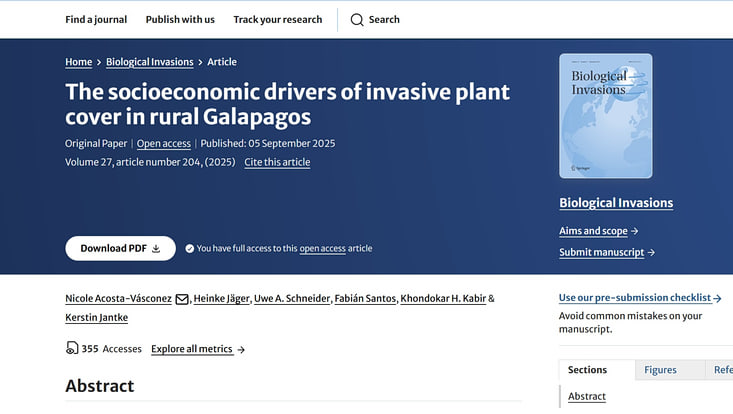New Study Highlights Socioeconomic Factors Influencing Invasive Plants on the Galapagos Islands
10 September 2025, by Cäcilie Melzer & Uwe Schneider

Photo: https://link.springer.com/
The unique biodiversity of the Galapagos Islands is increasingly threatened by invasive plant species, particularly in the highland areas. A recent study reveals that socioeconomic influences play a crucial role in the spread of invasive species.
In their research paper, "The Socioeconomic Drivers of Invasive Plant Cover in Rural Galapagos," Nicole Acosta, a PhD student at FNK, and several coauthors analyzed factors affecting the distribution of invasive plants on Santa Cruz and San Cristobal islands. They combined stakeholder surveys, plant cover modeling, and spatial and statistical analyses to gain comprehensive insights.
The study focused on common invasive species, including guava, Cuban cedar, and blackberry. The researchers found that different factors influenced the spread of these plants. For example, biophysical conditions like climate, soil properties, and topography were strong predictors of Cuban cedar cover. Conversely, socioeconomic factors, along with soil and climate, were better predictors of guava distribution. Landowners’ primary source of income and land use significantly impacted the presence of guava. Farms engaged in agriculture tended to have lower guava cover, while those focused on tourism exhibited higher levels.
The study also underscores the importance of high-quality data, which is crucial for accurately assessing the distribution of invasive species and advancing our understanding of invasive plant dynamics throughout the Galapagos Islands.


